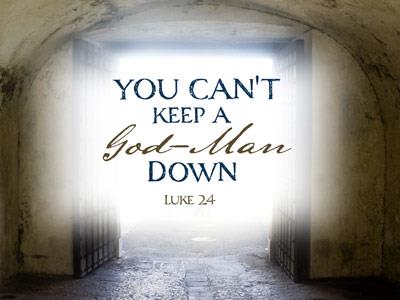-
The Tomb Of Jesus
Contributed by Charles Spurgeon on Nov 28, 2017 (message contributor)
Summary: A classic sermon by Charles Spurgeon delivered in 1855 on the occasion of Easter.
But, though it is a costly grave, it is a borrowed one. I see over the top of it, "Sacred to the memory of the family of Joseph of Arimathea;" yet Jesus slept there. Yes, he was buried in another's sepulchre. He who had no house of his own, and rested in the habitation of other men; who had no table, but lived upon the hospitality of his disciples; who borrowed boats in which to preach, and had not anything in the wide world, was obliged to have a tomb from charity. Oh! should not the poor take courage? They dread to be buried at the expense of their neighbors, but if their poverty be unavoidable, wherefore should they blush, since Jesus Christ himself was interred in another's grave? Ah! I wish I might have had Joseph's grave to let Jesus be buried in it. Good Joseph thought he had cut it out for himself, and that he should lay his bones there. He had it excavated as a family vault, and lo, the Son of David makes it one of the tombs of the kings. But he did not lose it by lending it to the Lord; rather, he had it back with precious interest. He only lent it three days; then Christ resigned it; he had not injured, but perfumed and sanctified it, and make it far more holy, so that it would be an honor in future to be buried there. It was a borrowed tomb; and why? I take it, not to dishonor Christ, but in order to show that, as his sins were borrowed sins, so his burial was in a borrowed grave. Christ had no transgressions of his own; he took ours upon his head; he never committed a wrong, but he took all my sin, and all yours, if ye are believers; concerning all his people, it is true, he bore their griefs and carried their sorrows in his own body on the tree; therefore, as they were others' sins, so he rested in another's grave; as they were sins imputed, so that grave was only imputedly his. It was not his sepulchre; it was the tomb of Joseph.
Let us not weary in this pious investigation, but with fixed attention observe everything connected with this holy spot. The grave, we observe, was cut in a rock. Why was this? the rock of Ages was buried in a rock—a Rock within a rock. But why? Most persons suggest that it was so ordained, that it might be clear that there was no covert way by which the disciples or others could enter and steal the body away. Very possibly it was the reason; but O! my soul, canst thou find a spiritual reason? Christ's sepulchre was cut in a rock. It was not cut in mould that might be worn away by the water, or might crumble and fall into decay. The sepulchre stands, I believe, entire to this day; if it does not naturally, it does spiritually. The same sepulchre which took the sins of Paul, shall take my iniquities into his bosom, for if I ever lose my guilt, it must roll off my shoulders into the sepulchre. It was cut in a rock, so that if a sinner were saved a thousand years ago, I too can be delivered, for it is a rocky sepulchre where sin was buried—it was a rocky sepulchre of marble where my crimes were laid forever—buried never to have a resurrection.

 Sermon Central
Sermon Central



